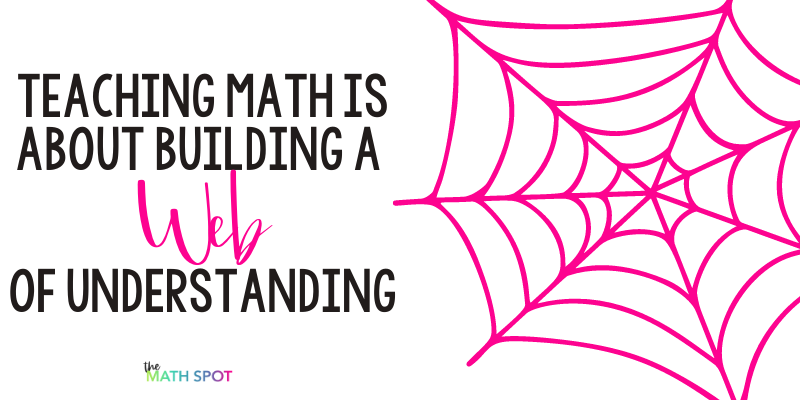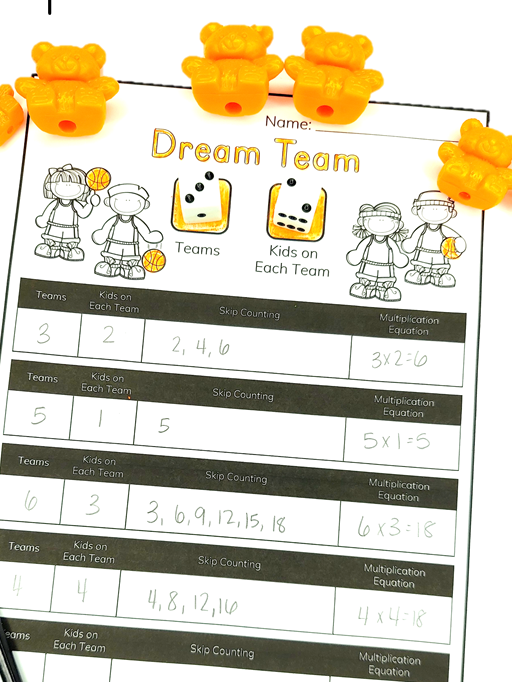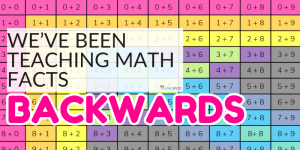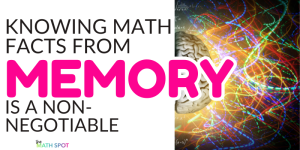This post contains affiliate links. This means that when you make a purchase, at no additional cost to you, I will earn a small commission.
When you are working with students in a math intervention setting we know that we need to focus on systematic math intervention instruction meaning that we, as the teacher, are working towards a clearly defined end goal and have broken instruction down into clear and manageable steps that build toward that goal.

Clear. Manageable. Steps. … sounds a lot like climbing a staircase or a ladder. But I want to challenge your thinking- there are other ways to climb toward a goal that will build a stronger foundation of understanding and will better support your students.
Teaching math intervention is about building a web, not climbing a ladder.
One of the evidence-based math interventions that will support you in building systematic instruction is to “Think CRA” when you are planning your instruction. A quick crash course in thinking CRA if this concept is new to you:
C- Start with concrete hands-on experiences. Manipulatives are the place to start!
R- Move to representational models like drawings and diagrams. Your students will still have visual support to reinforce their thinking.
A- At the abstract stage our students are thinking about numbers, equations, and word problems, void of visual or hands-on support. They have an *abstract* understanding of the concept.
But here’s the thing about the CRA approach– you need to keep in mind that you are building a web. Not climbing a ladder!
When you are climbing a ladder, if a rung is removed you don’t have a way to access the next step. For our students, if they are dependent on hands-on materials and stuck at the concrete level then as soon as that “rung” is removed and the manipulatives are taken away, our students are stuck– unsure how to proceed.
Part of creating a systematic math intervention lesson or unit includes being systematic about how supports are taken away!
If instead, we are intentional about building a WEB where students use concrete tools ALONGSIDE representational models, numbers, and equations then our students will have a much stronger foundation and a deeper understanding. When the concrete materials are taken away your students still feel confident in the use of representations or even equations. The web of connections they have built supports their overall understanding.
Systematic Math Intervention | 2nd Grade Example
Suppose I’m a second-grade teacher. It’s the beginning of the year and I’m noticing that I have a few students who are not confidently adding and subtracting single-digit numbers. I know I need to quickly build this understanding because my students need this skill to access tier 1 second grade math instruction.
My first step is to set my end goal. I want my students to be able to add and subtract using level 1 (count all) and level 2 (counting on/up) strategies.
I start by working at the concrete level to teach the counting all strategy of addition. This is as simple as solving 3 + 4 by modeling 3 blocks, 4 blocks and counting all to find the total. But let’s focus on how to build a web rather than thinking of modeling with blocks as the first step on a ladder!
While my students are modeling with blocks I am *also* asking them to draw a picture that matches their model. We are connecting concrete and representational models right off the bat! We are laying the foundation to, ultimately, take away hands-on tools in the future.
Systematic Math Intervention | 3rd Grade Example
Now suppose I am teaching 3rd grade students. I want to develop the idea of equal groups and connect the idea of equal groups to the operation of multiplication.
My end goal for this unit is to help my students use the operation of multiplication to solve problems involving combining equal groups.
I might start teaching this skill with a hands-on tool like counting bears. Can my students show me three groups of two? Immediately, I’m going to start connecting hands-on modeling of equal groups to the idea of skip counting and the idea of a multiplication equation.
After my students have modeled with bears I move them toward counting by two to find the total number of bears. My students also record this scenario as a multiplication equation.
This is A LOT of new information for students! For that reason, in our next session together we might do exactly the same thing- model an equal groups scenario and then connect that model to skip counting and a multiplication equation.
I want my students to continue building connections, however, so instead of using counting bears, in our next session we would work with a new material. It could be any tool that can be put into equal groups- linking cubes, mini erasers, crayons, etc!
Math Intervention Resources To Get Started
Ready to get started with systematic math intervention instruction? Check out my intervention bundles full of units that thoughtfully move from hands-on to abstract thinking while building a web of understanding for your students!
First Grade Math Intervention | Second Grade Math Intervention | 3rd Grade Math Intervention




